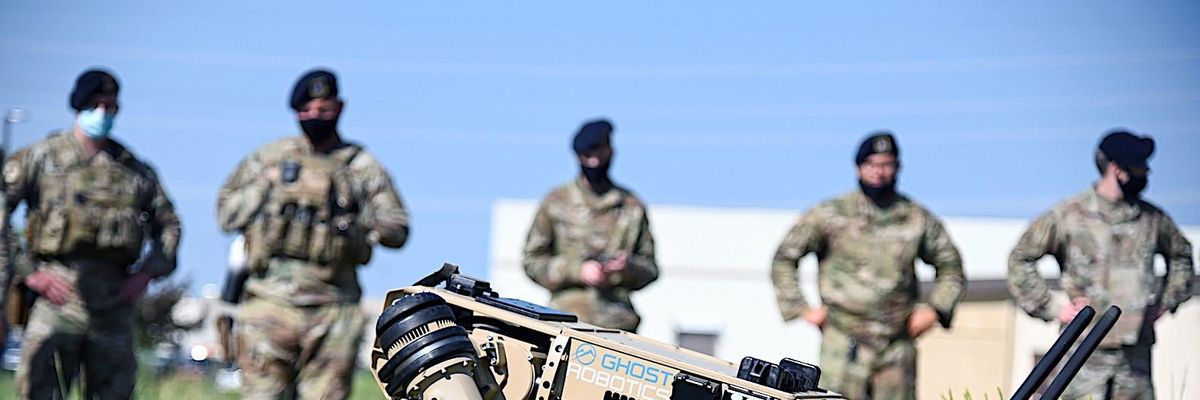On February 1, 2022, the U.S. Department of Homeland Security's Science and Technology Directorate, the official research and development arm of the agency, released a cutesy press release about how robotic dogs made in collaboration with Ghost Robotics are "one step closer" to deployment on the U.S.-Mexico border.
Covered with sensors and cameras that can relay information and footage in real time to Customs and Border Protection (CBP), these machines are less cute-video or selfie fodder and more of a civil liberties-invading hellhound.
Even if you live hundreds of miles from the border, don't think these "innovations" can't or won't affect you.
The dogs are not yet in the field, but having been pushed through early stages of testing, they are undergoing evaluation in El Paso, Texas. The robot dogs would eventually be expected to walk miles through the remote terrain at the border, all the while filming and scanning.
People who live along the border are some of the most heavily surveilled people in the United States. A massive amalgamation of federal, state, and local law enforcement and national security agencies are flying drones, putting up cameras, and just generally attempting to negate civil liberties--capturing the general goings-on of people who live and work in proximity to the border. But the civil liberties of these communities are of no concern to a government with nearly limitless resources to throw at putting entire regions of the United States under surveillance.
Even if you live hundreds of miles from the border, don't think these "innovations" can't or won't affect you. As we saw when Customs and Border Protection drones flew over a protest in Minneapolis, the $68 billion border surveillance industry won't stop expanding if there's money to be made further inland.
Already, we've seen similar robot dogs being called in to assist police in all sorts of tasks. In Honolulu, police have gotten pushback for using a $150,000 robot dog, purchased with COVID relief money, to harass and take the temperatures of unhoused people. The backlash the New York City Police Department received when a robot dog went along to a police call resulted in the termination of the contract to lease the device. Boston Dynamics, one of the more popular makers of robot dogs, has declared that it prohibits putting weapons on their robots, other developers are less conscientious.
Ghost Robotics, the company that makes the dogs now being tested for use at the border, has made dog drones with a number of corporate partners including Verizon, AWS, and reportedly weapons manufacturer SWORD. The partnership made headlines when they recently displayed a very armed robodog.
EFF reaffirms our call that police and other local, state, and federal agencies should not arm robots, whether they be autonomous or remote controlled. Every robot deployed in the name of surveillance is one step closer to seeing robots on the street armed with the capability to kill. It is especially troubling that the vendor moving forward with a potential contract with CBP is a company with no qualms about arming robots.
Maybe even a decade ago, this scenario--sounding the alarm about surveillance robots that could easily be armed in the future--would have seemed preposterous. But it seems increasingly likely by the day. That's precisely why the time to act is now, before these robots find their way into the hands and daily routines of law enforcement, in which case policing-by-robot will become the norm.

